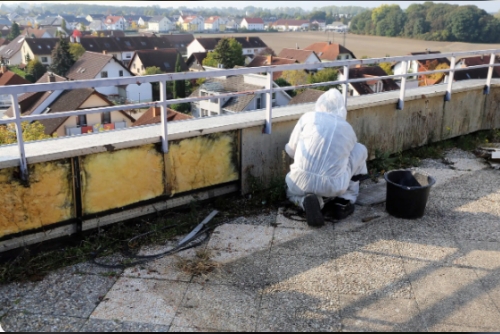Hazardous areas, also known as explosive atmospheres, are environments where a mixture of air and flammable substances—like gases, vapors, dust, or fibers—pose significant safety risks. In these environments, using the correct type of cable is essential to prevent explosions or fires caused by electrical faults. Hazardous Area Cables are designed to operate safely in such challenging conditions, ensuring that electrical systems continue to function reliably while minimizing the risk of ignition.
In this blog post, we will explore what hazardous area cables are, why they are important, and the different types available. We will also address key considerations when selecting these cables and answer five frequently asked questions.
What are Hazardous Area Cables?
Hazardous area cables are specialized electrical cables engineered to operate safely in environments where explosive gases, dust, or other flammable materials may be present. These cables must meet stringent safety standards to prevent sparking, overheating, or other electrical hazards that could ignite an explosion.
Common hazardous areas include oil refineries, chemical plants, grain storage facilities, pharmaceutical manufacturing, and offshore platforms. In these environments, standard cables may not offer sufficient protection, making hazardous area cables a critical component in ensuring operational safety.
Why Are Hazardous Area Cables Important?
The use of hazardous area cables is vital for several reasons:
Safety: The primary goal of hazardous area cables is to prevent ignition. They are designed with special insulation, armoring, and sheathing to minimize the risk of sparks or electrical arcing, even in volatile atmospheres. Compliance: Hazardous areas are subject to strict regulatory standards, such as the ATEX directive in Europe or NEC 500/505 in the United States. Using compliant hazardous area cables ensures that electrical installations meet these legal requirements. Durability: These cables are built to withstand harsh environmental conditions, including extreme temperatures, chemicals, and mechanical stress, ensuring long-term reliability in hazardous environments. Operational Continuity: Downtime in hazardous environments can lead to significant financial losses or even accidents. Hazardous area cables are designed to maintain their performance in adverse conditions, reducing the risk of system failures.Types of Hazardous Area Cables
Different types of hazardous area cables are available depending on the specific requirements of the installation. Here are some common types:
Instrumentation CablesInstrumentation cables are used to transmit signals in hazardous environments where accuracy and reliability are critical. These cables are shielded to prevent electromagnetic interference and often have flame-retardant or fire-resistant properties to ensure safe operation in volatile conditions. Control Cables
Control cables are designed to transmit control signals between electrical equipment, such as motors, relays, and monitoring devices. In hazardous areas, these cables must have enhanced insulation and armoring to prevent any risk of ignition. Power Cables
Power cables in hazardous areas are designed to carry electrical power to equipment and systems, such as pumps, lighting, and machinery. They are heavily armored and often come with protective coatings to withstand extreme environmental factors, including corrosive chemicals, moisture, and high temperatures. Marine and Offshore Cables
These cables are specially designed for use in marine and offshore oil and gas platforms, where exposure to saltwater, high humidity, and harsh weather conditions is a concern. They offer superior protection against corrosion and mechanical damage. Fire-Resistant and Flame-Retardant Cables
In hazardous areas, fire-resistant and flame-retardant cables are essential to prevent fires from spreading in the event of an electrical fault. These cables are often used in control rooms, emergency systems, and critical safety devices where fire hazards are a significant concern.
Key Considerations When Choosing Hazardous Area Cables
Choosing the right cable for a hazardous area requires careful evaluation of the environment and operational requirements. Here are some key factors to consider:
Classification of the Hazardous AreaHazardous areas are classified based on the type and frequency of explosive risks. For example, the ATEX directive defines zones such as Zone 0, Zone 1, and Zone 2 for gas atmospheres, and Zones 20, 21, and 22 for dust atmospheres. Selecting a cable that meets the classification of the hazardous area is crucial for safety and compliance. Temperature Ratings
Hazardous areas often experience extreme temperatures, and cables must be rated to handle these conditions. Ensure the cable can withstand both the ambient temperature and any potential temperature fluctuations in the environment. Chemical Resistance
In chemical plants and other industrial facilities, cables are often exposed to corrosive substances. Hazardous area cables must have robust chemical-resistant sheathing to prevent degradation over time. Armoring and Protection
Armored cables offer additional protection against mechanical damage, making them suitable for areas with heavy machinery or where cables might be exposed to impact or abrasion. Regulatory Compliance
Always ensure that the cables selected meet the necessary safety standards and regulations, such as ATEX, IECEx, or NEC. Failure to comply with these standards can result in fines, shutdowns, or increased risk of accidents.
5 FAQs about Hazardous Area Cables
1. What
is the difference between hazardous area cables and standard cables?
Hazardous area cables are designed to operate safely in environments with
explosive risks. They have enhanced insulation, armoring, and sheathing to
prevent sparks, overheating, or other faults that could ignite flammable
materials. Standard cables do not provide this level of protection and are
unsuitable for use in hazardous environments.
2. How do
I know if I need hazardous area cables for my installation?
If your installation is located in an area classified as a hazardous zone—such
as those with flammable gases, vapors, or dust—you will need hazardous area
cables. Consult with a safety officer or electrical engineer to assess the
classification of your area and determine the appropriate cable requirements.
3. Are
hazardous area cables more expensive than standard cables?
Yes, hazardous area cables are typically more expensive than standard cables
due to their specialized design and materials. However, this cost is justified
by the enhanced safety, durability, and compliance with regulatory standards
that these cables offer.
4. Can
hazardous area cables be used in non-hazardous environments?
Yes, hazardous area cables can be used in non-hazardous environments, but this
is generally not cost-effective. In non-hazardous areas, standard cables are
sufficient and more economical to install.
5. What
maintenance is required for hazardous area cables?
Regular inspection and maintenance of hazardous area cables are essential to
ensure they continue to function safely. This includes checking for signs of
wear, corrosion, or mechanical damage, and ensuring that all connections are
secure. It is also important to test the cables periodically to confirm they
meet safety standards.
Conclusion
Hazardous area cables are a critical component in ensuring the safety and reliability of electrical systems in high-risk environments. Whether you are working in an oil refinery, chemical plant, or offshore platform, choosing the right cables can mean the difference between safe operations and a potential disaster. These cables are designed to withstand the harshest conditions, offering protection against explosions, fires, and other risks that could result from electrical faults.











 Furnished 3-Bhk Flat Rent in Bashundhara R/A,Dhaka
Furnished 3-Bhk Flat Rent in Bashundhara R/A,Dhaka
